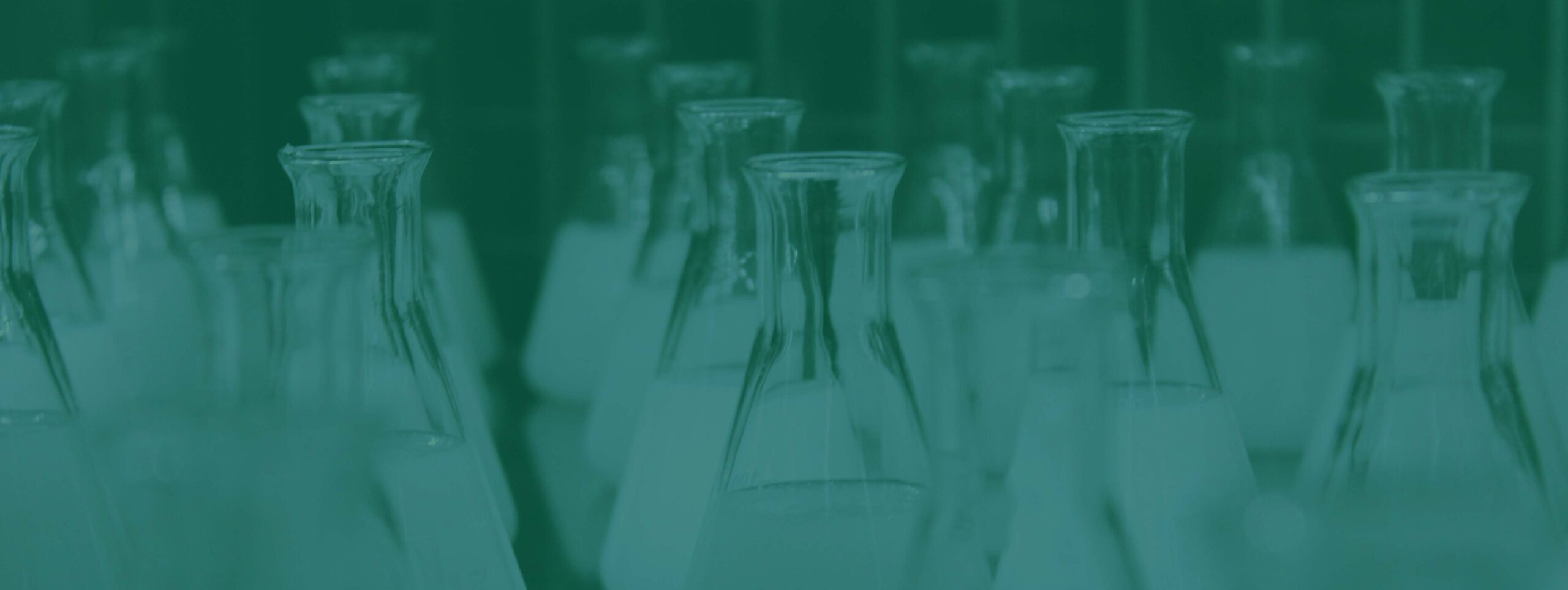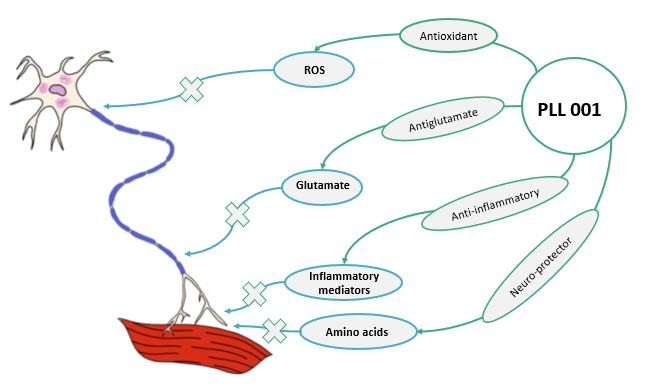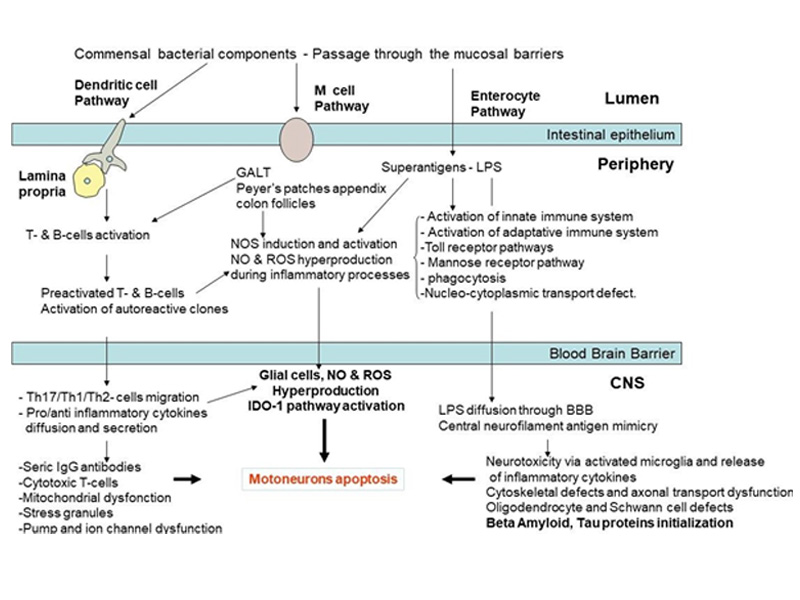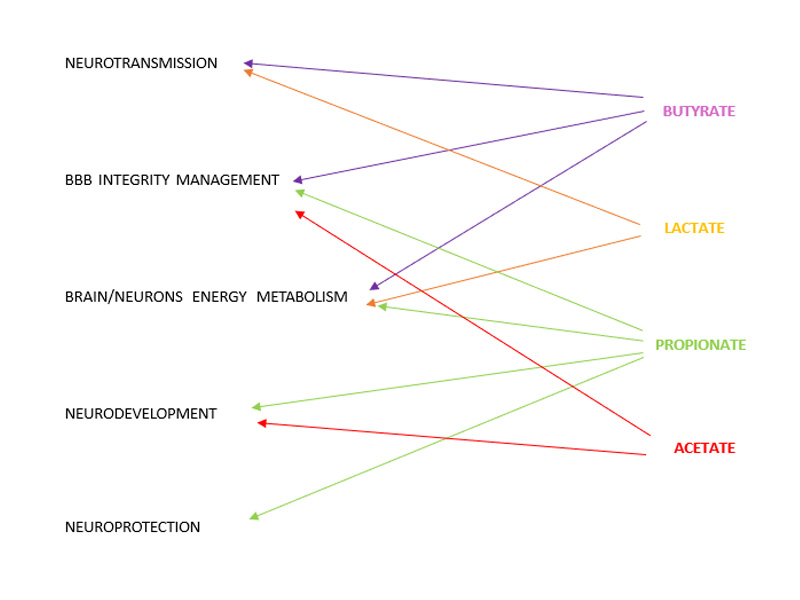
Clinical Trials
PLL THERAPEUTICS
… to define the best combination of compounds …
The PLL Therapeutic approach is based on the following principle :
- Active molecules are linked to Poly-L-Lysine (PLL) which increases their half-life and thereby their systemic availability to exert their activity and/or cellular uptake.
- Poly-L-Lysine was selected among other half-life enhancers as it may, by itself, have beneficial properties.
Based on the carrier properties of Poly-L-Lysine, we have developed PLL-001, a multifunctional therapy that has demonstrated a breakthrough potential to treat ALS in preclinical studies. PLL-001 is composed of APIs known to be effective against ALS’ neuro-inflammatory and neurodegenerative pathological pathways and to restore the integrity of the gastrointestinal barrier.
More on PLL-001 therapy targets
A multi-target approach is needed for this multifactorial disease
PLL-001 aims to counterbalance the multiple cellular metabolic defects of ALS and their consequences on motor-neurons, including :
- ROS (Reactive oxygen species)
- Glutamate
- Inflammatory mediators
- Amino acids
- Gut mucosal permeability

More on PLL-001 therapy Mechanism
ALS is a multifactorial disease and below we present the origins and the path that can lead to contracting it.
This path is valid also for other neurodegenerative diseases such as Parkinson’s, Alzheimer’s or Auto-Immune diseases such as Multiple Sclerosis….
Factors that can create INITIALISATION
- Food
- Medication
- Infection (Fungi, bacteria or virus)
- Stress
- Auto-Immune disease
- Environmental toxins (Pesticides, chemicals…..)
- Low level in Vit D
- Genetic SOD1 …
- The first 1000 days after birth (antibiotics,) with a microbiome impact
- …
Factors that can create CHRONICITY
The Chronicity factors are multiple but are present, non-random factors that will be at the origin of the deleterious processes maintained.
external environments —-> Mucosal interface —–> Internal environment The factors are Multiple, some are occasional others are already present as, for example, the microorganisms that live on our mucosal membranes.
API (Active Pharmaceutical Ingredient)
What type of API is being referred to in the different sections
The Intestine is clearly at the origin of such disease, even if 5 to 10% of the ALS population have a genetic topic as well-known gene as SOD1. During our preclinical studies we did show that SOD-1 G93A mice had a disturbed microbiome, the same as another origin.
In terms of Drug effect, the target is clearly to restore gut integrity and avoid large leakage.
To maintain such effect there is the role of the Small Chain Fatty Acids (SCFAs) which allow you to keep the tight junction between the enterocytes. To maintain the Homeostasis of the gut as well as the pH, SCFAs such as Acetate and Lactate are important.
Unlike propionate and acetate which move more easily into the blood, butyrate is mainly metabolized in the colon. A small part will pass into the blood and play an important role in the permeability of the BBB.
The 4 mains SCFAs are: Butyrate, Propionate, Acetate and Lactate
They are mainly produced by gut bacteria (weak bacteria). So, in case of breaking Homeostasis by pesticides or SOD1 familial forms or food … the bacteria stop producing these SCFAs and the Dysbiosis starts with all its deleterious effects.
Therefore, our technology link to a specific Polymer such as PLys (Poly L Lysine) will make it possible to transport these SCFAs in the body, focusing on the Gut and BBB to reestablish Normal Gut permeability.
We show that our PLL-001 has a dose effect in our previous Clinical Trial in multiple sclerosis (MS) as well as in our preclinical study on our SOD-1 G93A mice.
Our target in terms of dosage of PLL-001 is to restore the same quantity of SCFAs as in Heathy People.
Our PLL-001 5x will restore around 5 to 6 µmol/L of Butyrate in the blood which is very close to the requirements of around 3µmol/L for a heathy patient.



